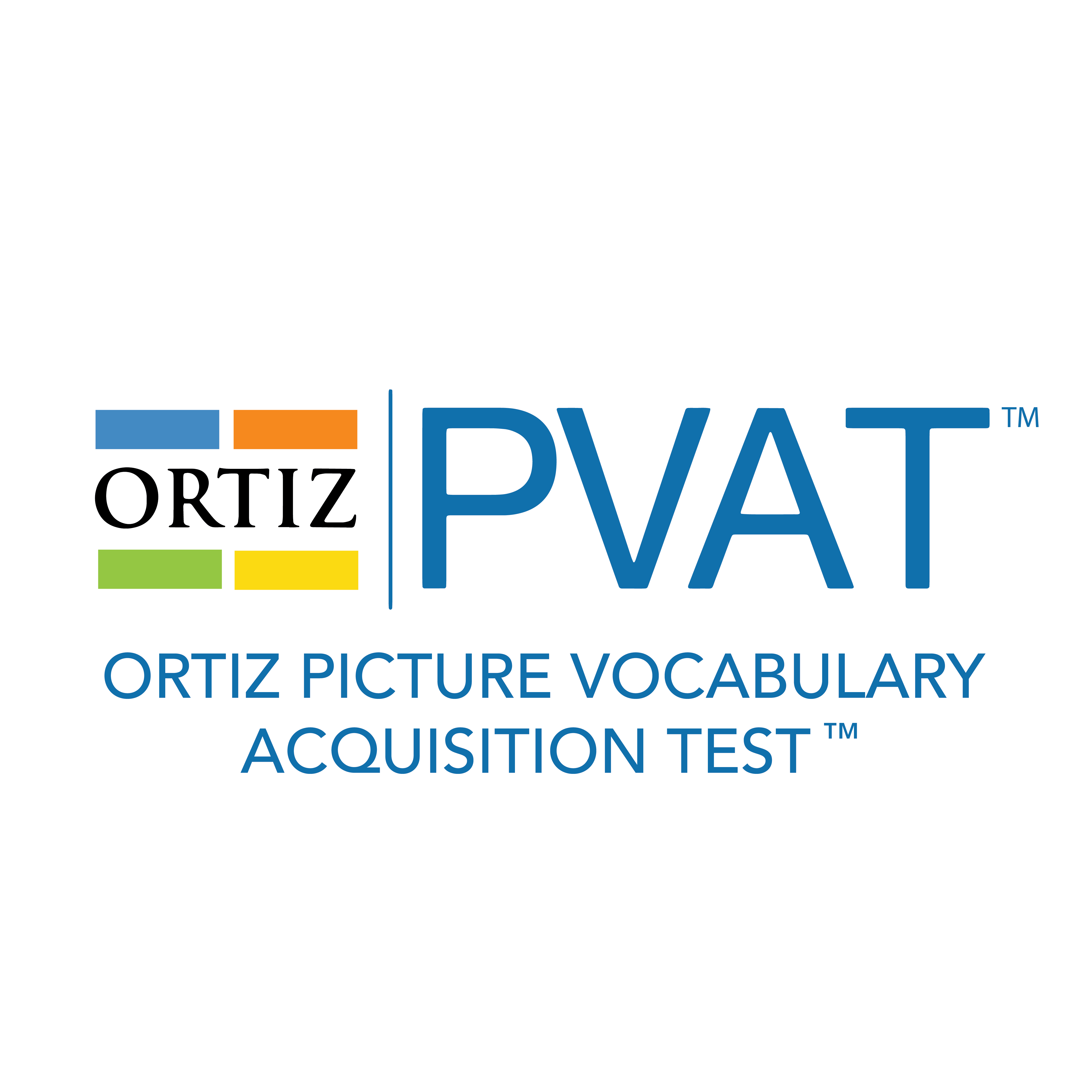
Ortiz PVAT™
Ortiz Picture Vocabulary Acquisition Test™
Filters
The Ortiz PVAT is the first receptive vocabulary assessment that can be used to fairly and accurately assess both English speakers and English learners. With unique dual norms (English speaker norms as well as English learner norms that control for exposure to English), the Ortiz PVAT makes it possible to evaluate an individual from any language background, determine whether an individual’s English vocabulary performance follows expected patterns (as either a native English speaker or an English learner), or rather, is suggestive of a language problem or disorder.
Delivered in a fully digital format, the Ortiz PVAT represents a new direction in fair and standardized receptive vocabulary assessment that allows any practitioner to make valid diagnostic and intervention decisions.
Watch the Ortiz PVAT Demonstration and more:
Age
- 2 years 6 months to 22 years 11 months
Administration Time
- 15 to 30 minutes
Qualification Level
- B
Format(s)
- Software Administration with Online Scoring
System Requirements
- iPad, Windows 8.1® or Windows®10
- Dual-Core 2.4 GHz Processor
- 512 MB RAM
- 1.1 GB of hard drive disk space
- Minimum screen resolution of 1366 x 768 pixels
- Mouse, pointing device, or touchscreen
- Internet access (at minimum initiate the assessment and to send the result to Portal for scoring and reporting)
- Assess both English speakers and English learners (irrespective of their primary language) accurately with one, user-friendly test
- Easy administration in English to allow for use by any English-speaking practitioner
- Exposure to English controlled for in the creation of the assessment’s English Learner norms
- Experience this revolutionary test in two convenient ways, either on your iPad or on your Windows computer
- Digital format with fully computerized administration and scoring, with built in basal and ceiling
- Ecologically valid visual stimuli using photographs of real objects/actions and pre-recorded audio for target word presentation with neutral pronunciation and voicing
- Psychometrically equivalent parallel forms (Form A and Form B) for progress monitoring (included in software; no separate purchase necessary)
Assessment Reports include scores (raw scores, standard scores, confidence intervals, percentiles, age equivalents, and stanines) and interpretive information, as well as instructional level and intervention recommendations.
Progress Reports include a Growth Index for evaluating growth in vocabulary over time along with the various types of test scores available in Assessment Reports.
The Ortiz PVAT is individually administered. Four photographs depicting real world objects or scenes are presented on a computer screen: one image illustrates the target word and the other three serve as distractors. The target word is presented in a pre-recorded audio format and the examinee indicates the meaning of the presented word by selecting the picture that best illustrates the object, action, or concept of the target word.
The Ortiz PVAT includes both English Speaker and English Learner normative samples that are representative of the U.S. population.
English Speaker Normative Sample
The Ortiz PVAT English Speaker normative sample (N = 1,530) was collected using a stratified sampling plan based on age, gender, race/ethnicity, parental education level, and geographic region. English Speakers, based on the 2014 American Community Survey of the U.S. Census Bureau, were defined as those who indicated “Speak only English” for their language spoken at home. The sample was balanced across 17 age bands (N = 90/age band), and gender was balanced (50% male; 50% female) within each age group. Representation by race/ethnicity, parental education level, and geographic region all fell within 2% of the U.S. population targets.
English Learner Normative Sample
The Ortiz PVAT English Learner normative sample (N = 1,190) was collected using a stratified sampling plan based on age, gender, language spoken at home, parental education level, and geographic region. This stratification plan was based on characteristics of individuals in the U.S. population with exposure to a language other than English as reported in the 2014 American Community Survey of the U.S. Census Bureau. The sample was balanced across 17 age bands (N = 70/age band), with a balanced gender split (49.2% male; 50.8% female). Representation by language spoken fell within 2% of the U.S. population targets. In addition, efforts were taken to ensure a wide range of exposure to English.


